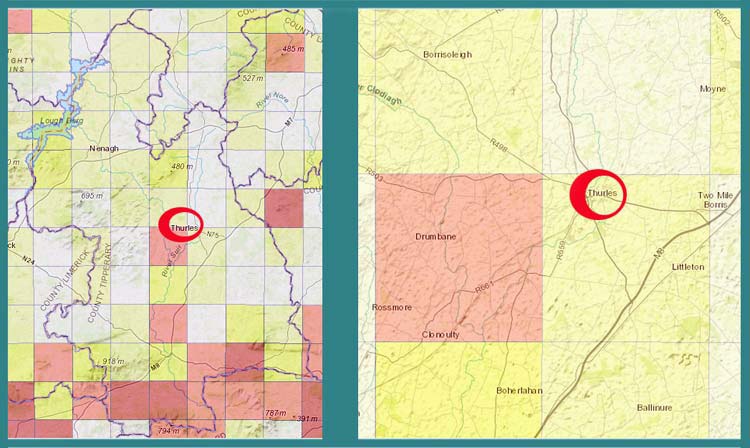- Radon is a radioactive, cancer-causing gas.
- 300 lung cancer cases in Ireland each year are linked to exposure to radon.
- The risk of developing radon related lung cancer is particularly high for smokers. In fact, smokers are at about twenty-five times greater risk than non-smokers.
- It is easy to test your home for this indoor air pollutant and to reduce high levels.
- The highest level home tested in Ireland this year had over 22 times the acceptable level. This level could give a radiation dose equivalent to receiving 15 chest X-rays a day.
On European Radon Day, 7th November, the Environmental Protection Agency (EPA) are calling on all householders to test their homes for this cancer-causing radioactive gas. Radon is the second biggest cause of lung cancer after smoking. In Ireland, it is estimated that about 300 lung cancer cases each year are linked to radon exposure.

What is Radon?
Radon is a radioactive gas formed in the ground from the radioactive decay of uranium which is present in all rocks and soils. It has no smell, colour or taste and can only be detected using radon detectors. Outdoors, radon quickly dilutes to harmless levels but when it enters an enclosed space, such as a house or other building, it can accumulate to unacceptably high levels. Radon is a lung carcinogen and is linked to some 300 lung cancer cases each year in Ireland making it a serious public health hazard.
About a third of Ireland is classified as a high radon area by the EPA. However, the EPA recommends that homeowners in all areas of Ireland test their homes for radon. You can check if you are living in a high radon area on the EPA’s interactive radon risk map on www.radon.ie. Ireland has relatively high indoor radon levels, with an average indoor level of 77 Bq/m3, compared to the worldwide average of 39 Bq/m3.
Radon gas can seep into your home through small cracks and gaps in the foundations of the building or openings around service pipes. It comes from the rocks and soil in the ground under your home. Radon has no colour, taste or smell, so the only way to know how much of this pollutant is in your home is to carry out a radon test.
The test costs about €50 and is all done by post using one of the services registered with the EPA. The test kit includes two radon detectors – one should be placed in the bedroom and one in the living room. After three months, the detectors are posted back to the provider and analysed to see how much radon they have been exposed to in your home. The results are posted back to you, with advice on how to deal with any high radon readings.
Stephanie Long, (Manager of the EPA’s Radon programme) has stated: “Exposure to high levels of radon can cause lung cancer and many families are unknowingly living with this indoor air pollutant. Earlier this year, one home was found to have over 22 times the acceptable level. Living with this level of radon gives a radiation dose equivalent to getting 15 chest x-rays a day.”
You can visit www.radon.ie to find out how to test your home and keep you and your family safe. Reducing radon levels is simple and inexpensive and will immediately reduce the risk of developing lung cancer.
For moderate levels of radon, improving indoor ventilation may reduce the level by up to half, the cost of which is low. For higher levels, a fan assisted ‘sump’ can be installed which can reduce radon levels by over 90 per cent. The sump can be installed in a day by a contractor with little disruption to the home.
Alison Dowdall (EPA) has stated, “Radon is everywhere but is only a problem if it is ignored. Testing for radon – where high levels are found – and fixing the problem are both relatively straightforward and easy to do. Now more than ever, as people spend more time at home, we would urge everyone to take action on radon, improve your indoor air quality and keep your home safe from this cancer-causing gas.”
Thurles is not regarded as a ‘High Radon Area’.

Leave a Reply